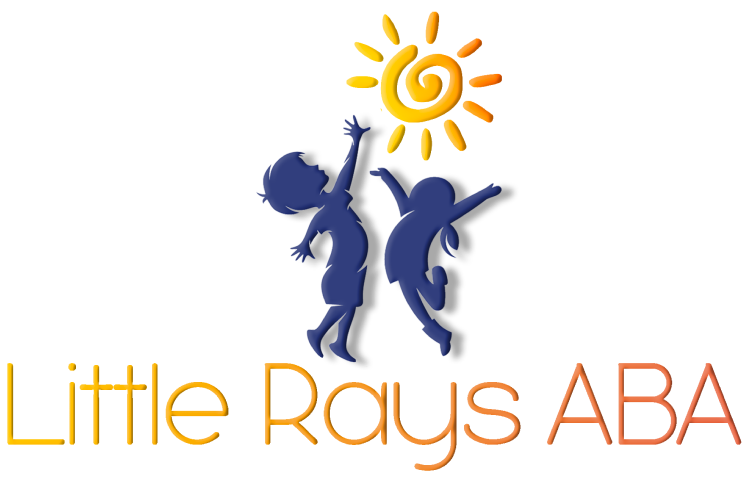Key Highlights
- Autism spectrum disorder (ASD) is a complex neurodevelopmental condition with a multifaceted array of potential causes, making it challenging to pinpoint one definitive origin.
- While the exact causes of autism remain under investigation, extensive research points to a combination of genetic and environmental influences that contribute to its development.
- Genetic predisposition, family history, and specific genetic mutations significantly elevate the risk of autism.
- Environmental influences, including prenatal exposures, maternal health factors, and early childhood experiences, also play a role.
- Understanding the interplay of these factors is crucial for improving autism diagnosis, treatment, and support for individuals and families affected by this condition.
Navigating the world of Autism Spectrum Disorder (ASD) can feel like stepping into uncharted territory. But understanding the basics of this complex and diverse condition is a crucial first step toward providing the right support and fostering inclusion.
Autism is not a disease but a developmental condition that shapes how individuals experience and interact with the world around them. In this guide, we’ll explore the autism spectrum, its signs, and the role of early intervention in unlocking potential and enhancing lives.
The Role of Genetics in Autism
Genetics plays a significant role in the development of autism spectrum disorder. Family and twin studies consistently demonstrate a higher prevalence of autism among individuals with autistic family members. This familial clustering strongly suggests a genetic component in ASD.
The search for specific genetic links to autism is an active area of research. Scientists have identified numerous genes and gene variations associated with an increased risk of autism. However, it's important to note that no single gene acts as a "cause" of autism. Rather, multiple genes likely interact with environmental factors to shape an individual's susceptibility to developing ASD.
Key Genetic Factors and Mutations
Several genetic factors and mutations are known to play a role in increasing autism risk. One prominent example is Fragile X syndrome, a genetic disorder caused by a mutation in the FMR1 gene on the X chromosome. This syndrome is characterized by intellectual disability and developmental delays, and a significant proportion of individuals with Fragile X syndrome also meet the criteria for an autism diagnosis.
Beyond specific syndromes like Fragile X, research has uncovered many other genes with potential links to autism. These genes influence various aspects of brain development, including the formation of synapses (connections between brain cells) and the regulation of neurotransmitters (chemicals that transmit signals in the brain).
While these genetic discoveries are crucial for understanding the biological underpinnings of autism, it's vital to emphasize that genetic factors are not deterministic. The presence of a particular gene variant does not guarantee that an individual will develop ASD. It merely suggests an increased likelihood compared to the general population.
Family History and Hereditary Patterns
Family history is a strong indicator of autism risk. If a child has a sibling or other close relative with autism, their chances of developing ASD are significantly higher than those without such a family history. This pattern points toward the involvement of hereditary factors – genes passed down from parents to offspring.
While the exact hereditary patterns of autism are complex and not fully understood, it's thought that multiple genes contribute to an individual's overall susceptibility to ASD. These genes may not directly "cause" autism but rather create a genetic predisposition, making an individual more vulnerable to developing the condition in the presence of certain environmental triggers.
Understanding the role of family history and hereditary patterns is crucial for identifying individuals at elevated risk of autism. This knowledge can lead to earlier interventions, tailored therapies, and improved support systems for families navigating the challenges of ASD.
Environmental Influences on Autism Development
While genetics lays the groundwork for autism risk, environmental factors play a crucial role in shaping how these genetic predispositions manifest. Exposure to certain environmental influences during critical periods of brain development, particularly prenatally and in early childhood, can significantly influence the trajectory of ASD.
These environmental factors can interact with an individual's genetic makeup, increasing or decreasing the likelihood of developing autism. Examples include prenatal exposure to certain substances, maternal health conditions, and early childhood experiences, all of which can impact brain development and subsequent behavioral outcomes.
Prenatal Exposure to Toxins
Prenatal exposure to certain environmental toxins has emerged as a significant risk factor for autism. Studies suggest a correlation between increased autism risk and exposure to pollutants like air pollution and pesticides during pregnancy.
Air pollution, particularly exposure to fine particulate matter, has been linked to neurodevelopmental issues, including autism. These particles can cross the placental barrier and interfere with fetal brain development, potentially contributing to the onset of ASD.
Similarly, pesticide exposure during pregnancy, particularly to organophosphate pesticides, has also raised concerns regarding autism risk. These chemicals, often used in agriculture, can affect the developing nervous system and may contribute to neurodevelopmental problems.
While further research is needed to fully elucidate the mechanisms, limiting exposure to these environmental toxins during pregnancy is crucial for mitigating potential risks.
Maternal Health and Lifestyle Factors
Beyond external environmental exposures, maternal health and lifestyle factors during pregnancy are gaining recognition for their potential influence on autism risk. While not direct causes, certain maternal conditions and choices can impact fetal development and may contribute to ASD.
For instance, maternal conditions like obesity, diabetes, and immune system disorders during pregnancy have been associated with a slightly higher risk of autism in offspring. The reasons for these associations are complex and likely involve a combination of genetic and environmental factors.
Furthermore, maternal lifestyle choices, including diet and medication use during pregnancy, can also influence fetal development. While more research is needed to fully understand the nuances, maintaining a healthy lifestyle during pregnancy is generally recommended.
Neurological Factors Contributing to Autism
Research increasingly points to autism as a neurodevelopmental disorder with clear neurological underpinnings. Brain imaging studies reveal distinct differences in brain structure and function among individuals with autism compared to their neurotypical peers.
These neurological differences likely arise from a complex interplay of genetic predisposition and environmental influences during critical periods of brain development. Understanding these neurological aspects is crucial for developing targeted interventions that address the core challenges of ASD.
Brain Structure and Connectivity in Autism
Brain imaging studies consistently reveal structural and functional differences in the brains of individuals with autistic disorder compared to neurotypical individuals. These variations offer insights into the neurological basis of autism and provide clues for potential interventions. For instance, studies show differences in brain regions involved in social cognition, communication, and sensory processing among autistic individuals.
The connectivity patterns within and between different brain regions also appear altered in autism. Some studies suggest an over-connectivity within specific brain regions, leading to heightened sensitivity to sensory input, a common characteristic of ASD. Conversely, other studies show under-connectivity between different brain regions, potentially explaining challenges with social communication and interaction.
Further research into these structural and functional variations is imperative to gain a comprehensive understanding of how autism affects the brain. This knowledge can help develop more targeted interventions that address specific neurological differences and improve outcomes for individuals with ASD.
Early Brain Development and Autism
The human brain undergoes rapid and complex development during early childhood, particularly within the first few years of life. This period represents a critical window of vulnerability where environmental influences can have a profound impact on brain wiring and function, potentially contributing to conditions like autism.
Disruptions to early brain development, whether due to genetic predisposition or environmental factors, can alter the normal trajectory of brain maturation. For example, some studies suggest that children with autism may experience accelerated brain growth in certain regions during early childhood, followed by slower growth later on, compared to their peers.
These variations in developmental trajectory can affect the formation of neural connections, leading to atypical brain wiring patterns. While the exact mechanisms are still unraveling, understanding the interplay between early brain development and autism is vital for developing effective early interventions and support strategies.
The Impact of Epigenetics on Autism Spectrum Disorders
Epigenetics is a rapidly evolving field that explores how environmental factors can alter gene expression without changing the underlying DNA sequence. This field is gaining increasing attention for its potential role in understanding complex disorders like autism spectrum disorders.
Essentially, epigenetics helps explain how environmental exposures can leave a lasting mark on gene function, influencing an individual's susceptibility to certain conditions. Understanding how these epigenetic changes contribute to autism risk is a promising avenue for developing targeted interventions and prevention strategies.
How Epigenetic Changes Affect Autism Risk
Epigenetic modifications, like DNA methylation and histone modifications, act as molecular "switches" that can turn genes on or off, influencing how our bodies read and interpret our genetic code. These epigenetic changes are particularly susceptible to environmental influences, explaining how external factors can exert long-term effects on gene expression.
Environmental exposures during critical developmental periods, such as prenatal development or early childhood, can trigger epigenetic changes that modify the expression of genes involved in brain development. These modifications might influence synaptic plasticity, neurotransmitter signaling, or other crucial processes, ultimately contributing to autism risk.
Further research into specific epigenetic alterations associated with autism is necessary to fully grasp their role in ASD. However, this emerging field offers a promising avenue for developing targeted interventions that could potentially modify epigenetic marks and mitigate the effects of environmental risk factors.
The Intersection of Genetics and Environment
Understanding the causes of autism spectrum disorder requires appreciating the complex interplay between genetic factors and environmental influences. While genetic predisposition sets the stage, environmental factors during sensitive developmental periods can influence how these genes are expressed, shaping the trajectory of ASD.
This intricate relationship is often described as a "gene-environment interaction," where specific genetic vulnerabilities might only manifest as autism in the presence of particular environmental triggers. These triggers could include prenatal exposures, maternal health conditions, or early life experiences.
Unraveling these complex interactions is crucial for developing effective prevention strategies, early interventions, and targeted therapies for autism. By addressing both the genetic and environmental components, we can strive to improve the quality of life for individuals with ASD and their families.
Dietary and Nutritional Aspects Related to Autism
While not considered a direct cause of autism, dietary and nutritional aspects are gaining attention for their potential influence on the severity of autism symptoms and overall well-being in individuals with ASD. Some autistic individuals experience gastrointestinal (GI) issues, which might exacerbate behavioral challenges.
Exploring the gut-brain connection and how dietary interventions could alleviate GI discomfort and potentially improve certain autism symptoms is a growing area of research.
Gastrointestinal Issues and Autism
Gastrointestinal (GI) issues, such as constipation, diarrhea, and abdominal pain, are commonly reported in individuals with autism, with some studies suggesting a higher prevalence of GI problems among autistic individuals compared to their neurotypical peers.
While the exact mechanisms linking GI issues and autism remain unclear, several theories are being explored. Some researchers believe that disruptions in the gut microbiome (the community of microorganisms living in our gut) might play a role. Differences in gut microbiota composition in autistic individuals could potentially influence gut motility, immune function, and even brain function through the gut-brain axis.
Dietary aspects, such as food sensitivities or intolerances, are also thought to contribute to GI problems in autism. While more research is needed to establish definitive links, addressing GI issues through dietary interventions, such as eliminating potential trigger foods or incorporating probiotics, might improve comfort and overall well-being in some individuals with ASD.
The Role of Diet in Managing Autism Symptoms
While dietary changes are not a "cure" for autism, some parents and healthcare providers explore dietary interventions to potentially help manage certain autism symptoms. The idea is that modifying food intake might address underlying nutritional deficiencies or sensitivities that could exacerbate behavioral challenges.
Common dietary approaches include eliminating gluten and casein (a protein found in milk) from the diet. These approaches stem from the theory that certain proteins might trigger an immune response or inflammation in the gut, potentially affecting brain function and behavior in susceptible individuals.
However, it's crucial to note that scientific evidence supporting the effectiveness of such dietary interventions for managing autism symptoms remains limited, and more robust research is needed. Consulting with a healthcare professional or registered dietitian is vital before making significant dietary changes for an individual with autism.
Immune System Dysregulation and Autism
Emerging research suggests a potential connection between immune system dysregulation and autism. Studies are exploring whether abnormalities in immune responses, particularly during early development, might contribute to the onset of ASD.
While the exact mechanisms are still being investigated, some researchers hypothesize that an overactive or misdirected immune response could lead to inflammation in the brain, potentially disrupting normal brain development and contributing to autistic behaviors.
Autoimmune Disorders and Autism Risk
Some studies have reported a higher prevalence of autoimmune disorders, such as rheumatoid arthritis and celiac disease, among parents of children with autism. These findings have sparked interest in the potential link between immune system dysregulation and autism risk.
Autoimmune disorders occur when the body's immune system mistakenly attacks its own tissues and organs. The presence of these disorders in parents suggests a potential genetic predisposition to immune system abnormalities, which might be passed down to their children.
While further research is needed to determine a causal relationship, these findings contribute to the growing body of evidence suggesting a potential role for immune system dysregulation in the development of autism.
Inflammation's Role in Autism
Inflammation, a natural immune response to injury or infection, is increasingly recognized as a potential contributor to neurological conditions, including autism.
While inflammation plays a protective role in the body, chronic or excessive inflammation in the brain is thought to disrupt normal neurological function.
Some individuals with autism show elevated levels of inflammatory markers in their blood or cerebrospinal fluid (the fluid surrounding the brain and spinal cord), suggesting increased inflammation in the central nervous system.
Furthermore, certain genetic variations associated with autism are involved in immune regulation and inflammation pathways, further strengthening the link between these factors. While more research is needed to clarify the relationship, understanding the role of inflammation in autism could provide valuable insights for developing targeted therapies and interventions.
The Significance of the Perinatal Environment
The perinatal period, encompassing the time shortly before, during, and after birth, represents a particularly sensitive window for brain development. Environmental exposures and complications during this critical time can potentially influence an individual's risk of developing autism.
Factors such as premature birth, low birth weight, and complications during labor and delivery have been associated with an increased likelihood of autism. Understanding the specific risks posed by these perinatal factors and exploring ways to mitigate them is essential for promoting healthy neurodevelopment.
Birth Complications and Autism Incidence
The perinatal environment, specifically the events surrounding birth, has been a focus of research exploring potential links to autism. While not definitive causes, certain birth complications appear to be associated with a higher incidence of autism.
For instance, studies show that premature birth (birth before 37 weeks of gestation), particularly extremely premature birth (before 28 weeks), is linked to an increased risk of ASD. Premature infants often face a greater likelihood of medical complications, including respiratory distress, infection, and brain injury, which could disrupt typical brain development.
Similarly, low birth weight (less than 5.5 pounds) is also associated with an elevated risk of autism. Low birth weight can indicate challenges with fetal growth and development and might increase vulnerability to health problems that could affect the brain.
The Effect of Premature Birth on Autism Risk
Premature birth, a significant risk factor for several developmental and health concerns, has been increasingly linked to a higher risk of autism. The earlier the gestational age at birth, the greater the likelihood of developing ASD.
Preterm infants, particularly those born extremely prematurely, often require intensive medical interventions, including prolonged hospital stays, oxygen support, and medications, which could inadvertently influence brain development. Additionally, prematurity itself might disrupt typical brain maturation processes, potentially contributing to the development of autism.
While prematurity doesn't guarantee that a child will develop autism, it highlights the importance of specialized care, early interventions, and ongoing support for preterm infants to optimize their developmental outcomes and address any potential challenges.
Postnatal and Early Childhood Exposures
The postnatal period and early childhood encompass a crucial window of rapid brain development. During this time, environmental exposures and experiences continue to shape the brain's wiring and function, influencing a child's developmental trajectory.
Certain exposures during these early years have been investigated for their potential links to autism, including childhood vaccinations, exposure to early life stress, and access to early intervention services. Understanding these connections is imperative for promoting healthy development and mitigating potential risks.
Vaccinations and Autism: Debunking Myths
Despite overwhelming scientific evidence disproving any link between childhood vaccinations and autism, this myth persists among some groups. The misconception arose from a now-retracted study that fraudulently claimed a connection between the MMR (measles, mumps, rubella) vaccine and autism.
Numerous large-scale studies have rigorously debunked this claim, definitively establishing that vaccines do not cause autism. The original study has been thoroughly discredited, and the lead author lost his medical license due to ethical violations.
Misinformation and fear surrounding vaccines can have dangerous consequences, leading to preventable outbreaks of serious diseases. Relying on credible sources of scientific information and consulting with healthcare professionals are crucial for making informed decisions about childhood vaccinations.
Early Life Stress and Its Connection to Autism
Early life stress, encompassing a range of adverse experiences during childhood, including neglect, abuse, and household dysfunction, can have long-lasting effects on brain development and increase a child's susceptibility to mental health issues, including autism spectrum disorders.
Exposure to chronic stress during these formative years can disrupt the development of neural circuits involved in emotional regulation, social cognition, and stress response. Toxic stress can lead to alterations in brain structure and function, potentially influencing the development of ASD-related behaviors.
While early life stress is not a direct cause of autism, it might act as a contributing factor, particularly in genetically predisposed individuals. Recognizing and mitigating the impact of early life stress through supportive caregiving, early interventions, and mental health services is crucial for promoting healthy development and reducing long-term consequences.
The Theory of Over- and Under-Connectivity
The theory of over- and under-connectivity in autism proposes that imbalances in neural connections within and between different brain regions might contribute to the characteristics of autism. This theory suggests that while some brain areas might exhibit excessive connectivity, leading to heightened sensitivity to stimuli, others might have reduced connectivity, affecting functions like social communication.
This theory helps explain the diverse range of sensory and social experiences common in autism. Understanding these connectivity patterns could guide the development of interventions that target specific brain regions or circuits to address individual challenges.
Sensory Processing and Autism
Sensory processing differences are a hallmark of autism, with many individuals experiencing either hypersensitivity (over-responsiveness) or hyposensitivity (under-responsiveness) to sensory input. These differences can manifest as heightened sensitivity to sounds, lights, textures, or smells, or as a need for intense sensory experiences.
The theory of over- and under-connectivity in autism suggests that these sensory processing differences might arise from atypical neural wiring in brain regions responsible for sensory processing. For instance, over-connectivity in auditory processing areas could explain sensitivity to sounds, while under-connectivity in sensory integration areas might contribute to difficulties processing and responding to sensory information effectively.
Understanding an individual's unique sensory profile is crucial for creating supportive environments that minimize sensory overload and provide appropriate sensory input to enhance learning and engagement.
The Social Brain and Connectivity in Autism
The "social brain" refers to a network of interconnected brain regions involved in social cognition, including recognizing faces, interpreting emotions, understanding social cues, and engaging in social interaction. Differences in the structure and function of the social brain are thought to contribute to the social challenges experienced by individuals with autism.
Research suggests that atypical connectivity within and between regions of the social brain might underlie difficulties with social skills in autistic individuals. Under-connectivity between areas involved in facial recognition and emotion processing, for instance, could make it challenging to read and respond to social cues effectively.
Further research into the neural underpinnings of social processing in autism is essential for developing interventions that enhance social communication and interaction abilities, ultimately improving social participation and quality of life for individuals with ASD.
Conclusion
Understanding the causes of autism involves a complex interplay of genetic, environmental, neurological, epigenetic, dietary, and immune system factors. From genetic mutations to prenatal exposures and brain connectivity, various elements contribute to the development of autism spectrum disorders.
At Little Rays ABA, we specialize in providing personalized ABA therapy services to help autistic individuals reach their fullest potential. Our expert team is dedicated to guiding families through every step of the journey, offering tailored support in a nurturing environment. Contact Little Rays ABA today to learn how we can partner with you in creating brighter futures!
Frequently Asked Questions
What are the most significant genetic markers for autism?
While no single gene "causes" autism spectrum disorder, research has identified numerous genetic variants associated with an increased risk of autism. Detecting these genetic markers might contribute to a better understanding of the condition and potentially lead to earlier diagnosis and intervention strategies.
How do prenatal environmental factors influence autism risk?
Prenatal environmental factors, such as exposure to certain toxins or maternal infections during pregnancy, might interact with genetic vulnerability, potentially affecting fetal brain development and contributing to autism risk or developmental delays in offspring.
Can dietary changes improve autism symptoms?
While not a cure for autism, some dietary changes, particularly those addressing potential food sensitivities or gastrointestinal issues, might help alleviate certain autism symptoms and improve quality of life for some individuals with ASD. Consulting with a healthcare professional or registered dietitian is crucial.
Unlock Your Child's Potential with Expert ABA Therapy!
At Little Rays ABA, we provide compassionate, evidence-based ABA therapy to help children with autism thrive. Our personalized approach fosters growth in communication, social skills, and independence.
Get In Touch With Us Today to Get Started With ABA Therapy!
Related Posts
MENU
GET IN TOUCH
7117 San Salvador Dr Boca Raton, FL 33433
3200 Collins Ave Miami Beach, FL 33140





